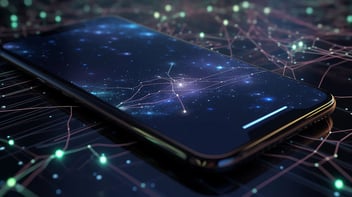Educational settings are some of the most technologically advanced environments around today. From K-12 to higher education, within both public and private institutions, technology has reshaped how education is delivered, accessed, and experienced. As this trend continues to accelerate, the burden on educational institutions to provide reliable high-speed access to all of the content and resources required, anywhere on campus, is set to grow along with it.
As such, without reliable, high-performance wireless connectivity, learning and its adjacent functions can be delayed, disrupted, and hindered, creating an unnecessary hindrance on student experiences and outcomes, with potential long-term impacts on the institution's overall academic reputation.
Private LTE network solutions are designed to support the complex and high connectivity demands that define the modern academic ecosystem. By providing dedicated, secure, and high-quality wireless connectivity, these networks help ensure that user communication, collaboration, and productivity are delivered seamlessly and consistently.
What Is a Private LTE Network?
LTE, or Long Term Evolution, is a wireless broadband communication standard primarily used for mobile internet access. While not strictly the same as 4G (fourth generation), LTE is closely related and offers significantly better performance than older 3G technologies, including faster upload and download speeds, improved streaming, and greater user capacity.
A private LTE network is used exclusively by a singular organization or a closed user group. This differs from traditional LTE networks operated by commercial telecom providers for the general public.
Private LTE networks can also be customized to meet the unique connectivity needs of organizations or user networks, and, as such, are commonly implemented by large corporations, transportation and logistics companies, healthcare facilities, large venues, government agencies, and educational institutions.
The Growth of Digital Education
The shift towards digital classrooms, online resources, and e-learning platforms has made connectivity indispensable to educational facility infrastructure. Interactive learning, remote education, and e-assessment (online testing) are now standard.
If you ask any student, they’ll likely tell you their school day is full of virtual experiences and tasks. These include:
- Web-based research using online databases, libraries, educational websites, or academic literature.
- Digital classes and video conferencing for discussions, lectures, labs, and demonstrations.
- Electronic assignment submission using learning management systems, such as Canvas, Google Classroom, or Blackboard.
- Online exams and assessments for flexibility, efficiency, and fairness.
- Virtual collaboration for group projects with tools such as Google Docs, Slack, and project management platforms.
- Educational software and apps for practicing math, conducting science experiments, or practicing a second language.
Additionally, wireless connectivity is essential for educational staff and administrators, empowering them to do their jobs more effectively and efficiently. Common uses include:
- Administrative tasks such as student enrollment, record keeping, and scheduling.
- Communication across staff, administration, parents, and students using email, instant messaging, and video conferencing.
- Security and surveillance to operate security systems to help ensure on-campus safety.
- Facilities management covering lighting, HVAC, and occupancy.
Impact of Poor Connectivity on Learning Outcomes
Research has shown poor connectivity can significantly impact education delivery and impair learning outcomes. While research from American University’s School of Education relates to connectivity at home, the effects are the same when considering connectivity in a school setting. In short, students with less or poor access to digital technology can experience the following:
- Declining engagement
- Lower academic performance
- Reduced competitive edge relative to peers
- Less convenient learning
- Suboptimal learning experiences, requiring more time and effort to complete objectives.
How Private LTE Networks Boost Education Delivery
While applicable in many less demanding contexts, traditional WiFi networks can fall short in providing the necessary coverage and bandwidth required in today’s educational setting, especially at larger campuses and during peak usage times.
Referencing Educause data, online wireless and mobile news outlet RCR Wireless News reports only 30 percent of undergrads say they have good or excellent WiFi access in outdoor public spaces, while only 50 percent report the same in college dorms. This is where a private LTE solution can offer several benefits.
Performance Consistency
Private LTE dedicated bandwidth enables network users to avoid performance fluctuations common to more widely shared architecture and higher user numbers. It can aptly manage dense network traffic and prioritize critical communications without degradation in service quality. This means smoother, synchronous learning sessions and video lectures, seamless access to online resources, and uninterrupted online testing environments.
Coverage Control
With a private LTE solution, network infrastructure, such as cell towers and antennas, can be strategically placed and configured so that coverage, signal strength, and device usage align with the specific requirements of network users. Private LTE networks can also cover broad areas or older, densely constructed structures more efficiently than traditional WiFi.
Enhanced Security
Security is a paramount concern in schools, especially when it comes to sensitive student data, physical and network access, and intellectual property. Private LTE networks offer advanced security features, reducing the risk of data breaches, cyber threats, and other potential dangers. These include:
- Enhanced communication channels for security personnel
- Robust surveillance systems such as HD video surveillance
- Rapid emergency response enabling quick dissemination of information and coordination of response efforts
- Access control to subvert unauthorized network access
- Fortified data security features to help protect sensitive information and communication from eavesdropping or interception
Device Support
With the increasing use of various digital devices in education, from laptops to tablets and IoT devices, private LTE networks can efficiently support a widening range of tools, facilitating a more integrated and interactive learning experience.
Advance Student Learning With Exceptional Private LTE Solutions
Airtower Networks provides next-generation private LTE networks designed for today’s and tomorrow’s educational connectivity demands. Customized solutions offer greater control, coverage, security, and capacity to help ensure seamless connectivity and reliability when and where users require.
As part of its solution, Airtower leverages cellular enhancement technology to deliver uninterrupted and responsive functionality for mobile devices throughout school buildings and grounds一regardless of mobile device carrier. As with variances in activity across the year, Airtower’s solution can also be scaled up or down as needed.
Finally, cutting-edge security features, such as encryption and authentication, protect even the most sensitive and confidential data.
With Airtower Networks, schools are equipped to overcome the limitations of traditional WiFi, enhancing both educational delivery and outcomes in our increasingly connected world.
Airtower Networks offers tailored solutions, including cellular, managed WiFi, private LTE, and more, to ensure flawless connectivity within buildings, boost productivity, and drive a competitive advantage. Connect with us today to empower your students and staff with next-generation wireless connectivity.
Subscribe to the Airtower Networks Blog
Get emailed articles, guides, and updates.




